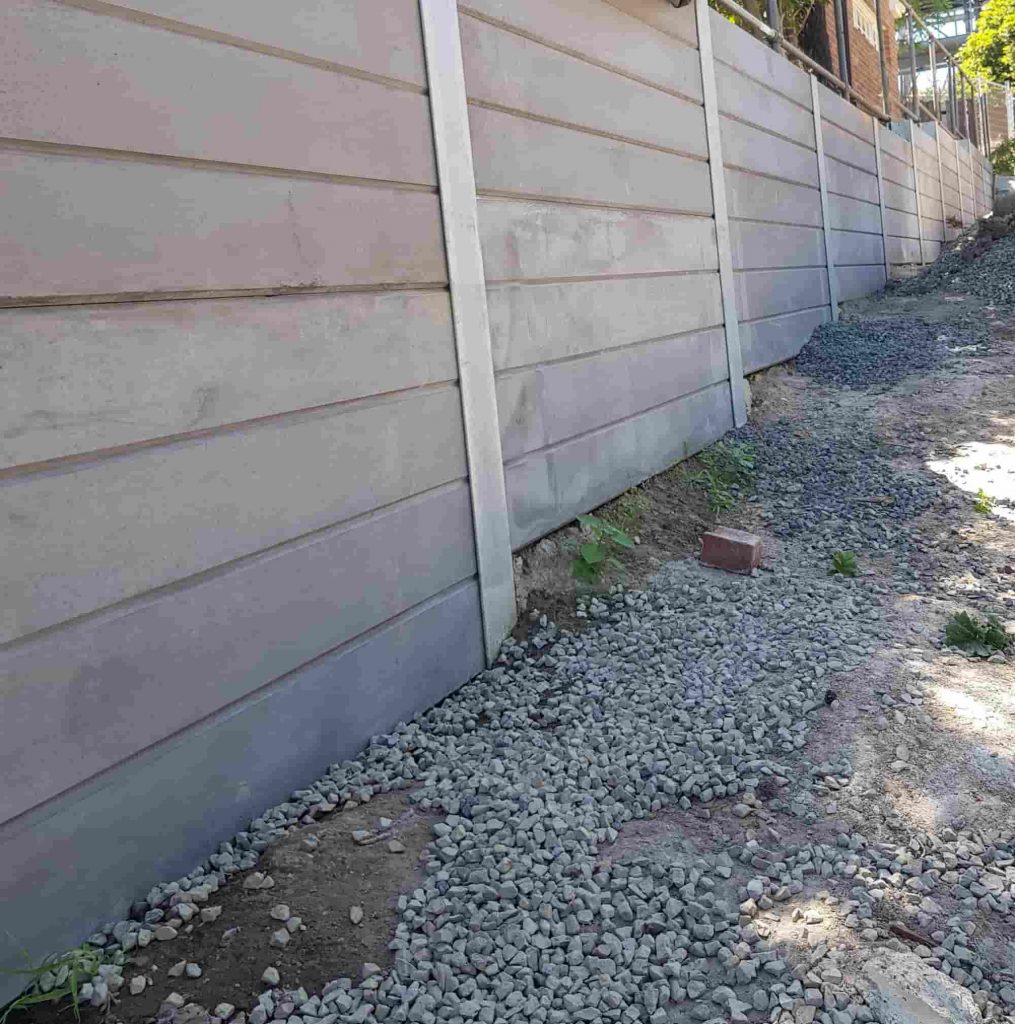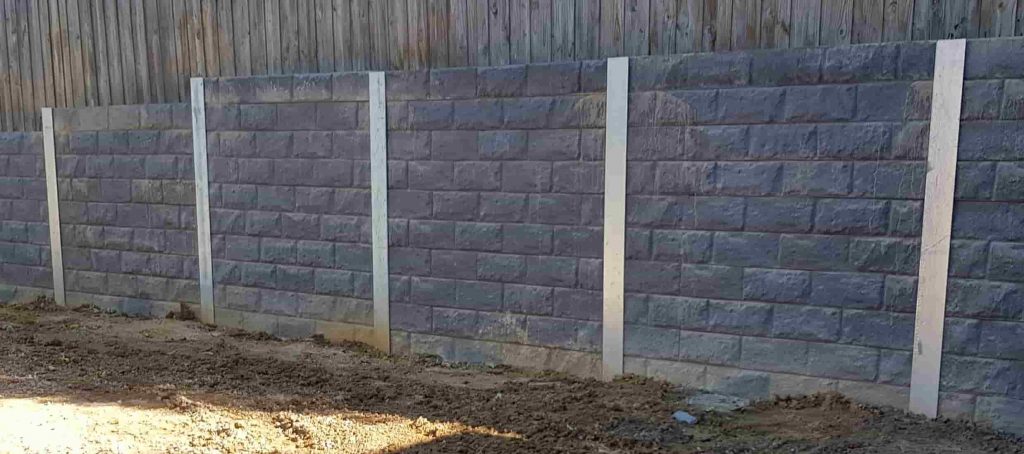Introduction
In the elaborate world of construction, job management serves as the backbone of successful endeavors. This is particularly true in specialized fields like retaining wall building and construction, where knowledgeable specialists need to link engineering know-how with creative analytical to accomplish ideal results. The expression "Successful Job Management by Skilled Retaining Wall Specialists" encapsulates the essence of what it takes to ensure that these projects are completed on time, within spending plan, and to the highest requirements of quality.
Retaining walls play an important function in supporting soil and avoiding erosion. Whether they are made from timber sleeper, concrete sleeper, or even H beam, their style and building need meticulous preparation and execution. This article will delve into different elements of project management particular to retaining wall building and construction, highlighting the value of professionalism and ability in accomplishing success.
Successful Task Management by Knowledgeable Retaining Wall Contractors
Successful project management in retaining wall jobs hinges on several crucial elements: correct planning, proficient labor, reliable communication, and rigorous quality assurance. A knowledgeable contractor can browse these complexities effectively, guaranteeing that every stage of the task aligns with both client expectations and regulative requirements.
Understanding Keeping Walls
What Are Maintaining Walls?
A retaining wall is a structure created to hold back soil or rock from a structure website. They are available in different products-- timber sleeper, concrete sleeper, or steel structures like H beams-- each providing distinct advantages based upon the project's requirements.
Types of Retaining Walls
Gravity Walls: These depend on their weight to withstand pressure from behind. Cantilever Walls: These utilize take advantage of to stand against lateral forces. Sheet Stack Walls: Suitable for soft soils; they interlock vertical sheets driven into the ground. Anchored Walls: Stabilized with cable televisions or rods protected in the soil behind them.The Role of Skilled Contractors
Why Pick Professional Contractors?
Choosing professional specialists for your retaining wall job makes sure that you receive professional guidance customized to your specific requirements. From picking appropriate products like wood or concrete sleepers to understanding regional policies, their competence proves invaluable.
Expertise in Product Selection
Different projects necessitate various products:
- Timber Sleeper Walls: Frequently utilized for decorative purposes; aesthetically pleasing but less durable. Concrete Sleeper Walls: More robust than lumber; suitable for larger projects requiring significant strength. H Beam Structures: Outstanding for sturdy applications where extra support is necessary.
Planning Phase: The Heart Beat of Project Management
Setting Clear Objectives
Establishing clear goals sets the phase for success. What do you want your retaining wall to attain? Disintegration control? Aesthetic appeal? Structural integrity? Specifying these objectives early helps guide decision-making throughout the project.
Budgeting Wisely
Creating a practical spending plan is important for any job's success. Consist of expenses for products (like timber sleeper or concrete sleeper), labor, equipment leasing, permits, and unforeseen contingencies.
Communication Methods for Success
The Importance of Open Communication
Effective communication amongst staff member promotes a collaborative environment conducive to analytical and innovation. Routine conferences ought to be set up at crucial milestones to examine development and address any issues promptly.
Utilizing Technology for Better Communication
Today's technology can enhance interaction significantly:
- Project management software application can track timelines and budget plans efficiently. Mobile apps can assist in real-time updates among employee on-site.
Risk Management Techniques
Identifying Prospective Dangers Early On
Understanding potential dangers-- consisting of weather affecting excavation work or delays in product supply-- is crucial for maintaining timelines and budgets.

Developing Mitigation Strategies
Once threats are determined, establishing methods to alleviate them is vital. This may include having backup suppliers or scheduling work throughout seasons with favorable weather condition conditions.
Execution Phase: Bringing Strategies to Life
Quality Control Procedures During Construction
Maintaining high requirements throughout building and construction makes sure sturdiness and longevity:
- Regular evaluations should be performed at each phase. Quality products should be sourced-- whether you choose timber sleeper or concrete options-- to make sure structural integrity.
Efficient Resource Management
Skilled professionals stand out at resource http://manuelfencebuilderbusinesszwao677.bearsfanteamshop.com/typical-obstacles-dealt-with-by-beginner-versus-seasoned-retaining-wall-contractors management-- enhancing labor hours while lessening waste is key to staying within budget plan and schedule.
Post-Construction Stage: Final Touches & Upkeep Planning
Conducting Thorough Inspections After Completion
Final assessments ought to validate that whatever fulfills both client expectations and regulatory requirements before moving forward with any landscaping or completing touches.
Creating a Maintenance Prepare for Longevity
Educating customers on how best to keep their brand-new retaining walls is similarly important as the building itself. Regular maintenance checks can prevent future issues connected to disintegration or structural failure.
FAQs
1. What types of products are best matched for keeping walls?
The option depends upon your particular needs:
- For looks: Lumber sleepers might be preferable. For toughness under pressure: Concrete sleepers are an exceptional option.
2. How long does it take to construct a maintaining wall?
The timeline differs based upon size and intricacy but generally varies from several days to a number of weeks.
3. Do I need a license for building a maintaining wall?
Yes, many towns need authorizations due to zoning laws aimed at preventing water overflow issues.


4. Can I construct a retaining wall myself?
While do it yourself projects can be gratifying, hiring professional specialists often ensures security, compliance with guidelines, and quality workmanship.
5. How do I understand if my soil requires stabilization?
Signs include persistent flooding after rain or noticeable erosion gradually-- professional assessments can supply clarity here.
6. What upkeep do retaining walls require?
This consists of routine examinations for cracks or bulging locations as well as guaranteeing drain systems remain clear of debris.
Conclusion
Navigating the complexities connected with "Effective Task Management by Skilled Retaining Wall Specialists" requires an understanding of engineering principles combined with practical experience in managing varied teams efficiently. By stressing appropriate planning, proficient labor choice-- including options in between timber sleeper and concrete sleeper options-- and rigorous interaction techniques throughout all phases-- from preliminary preparation through post-construction upkeep-- you set yourself up not just for completion but also long-term success in guaranteeing structural stability against nature's difficulties!
In short, whether you're an ambitious do it yourself enthusiast checking out self-built solutions or a skilled property developer seeking professional support-- embracing these concepts will certainly lead you towards more successful endeavors in building reputable retaining walls!